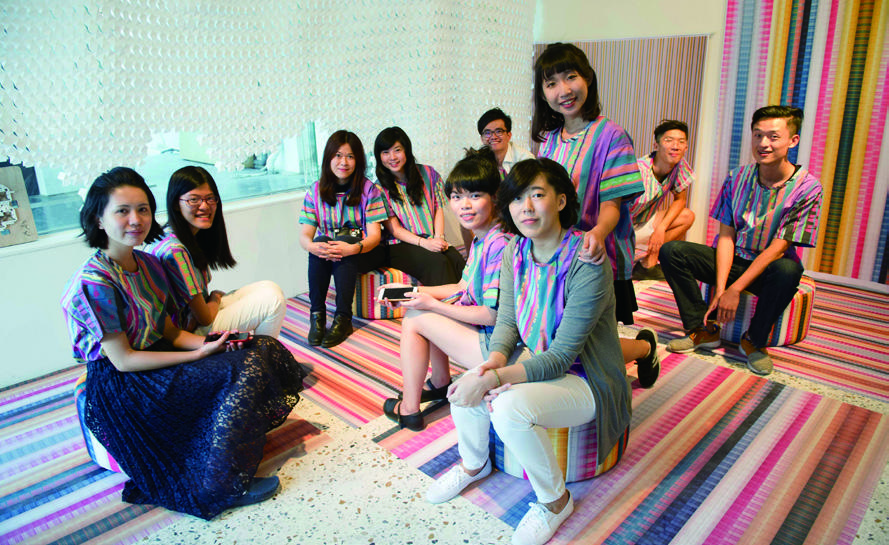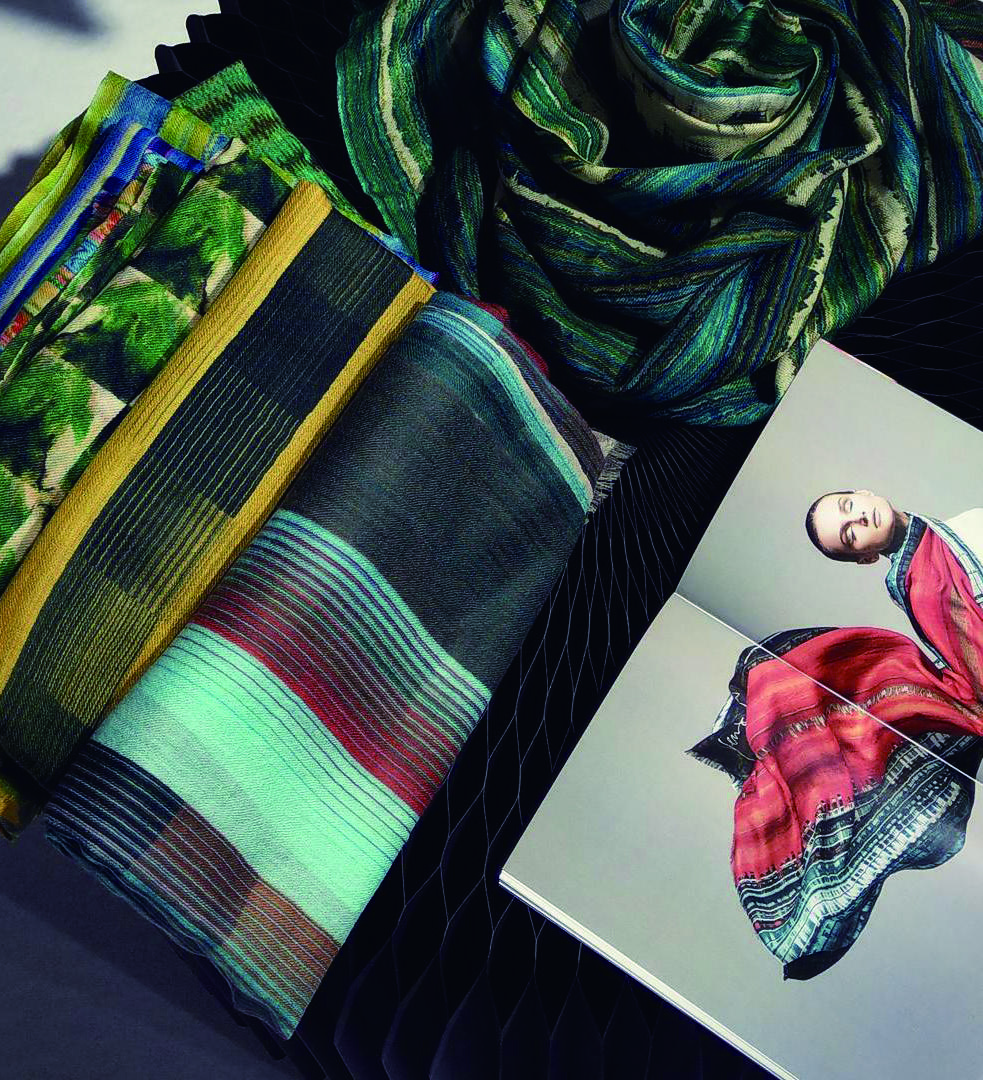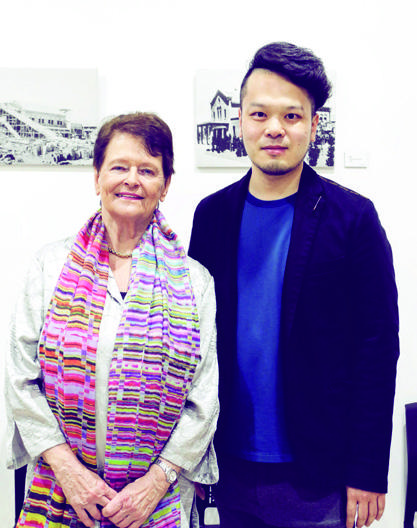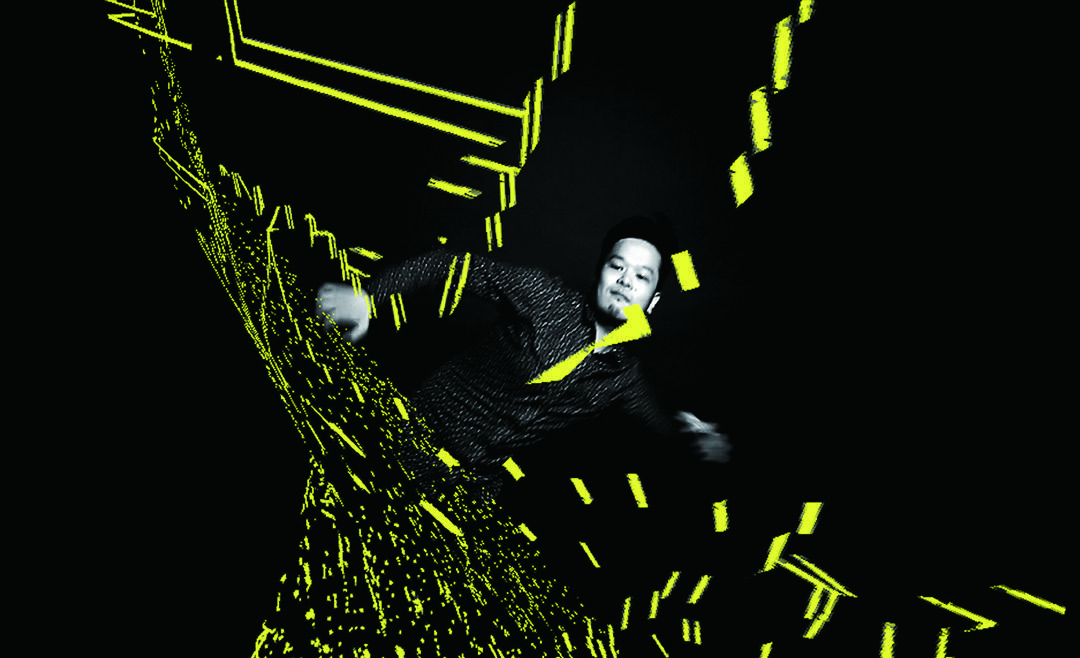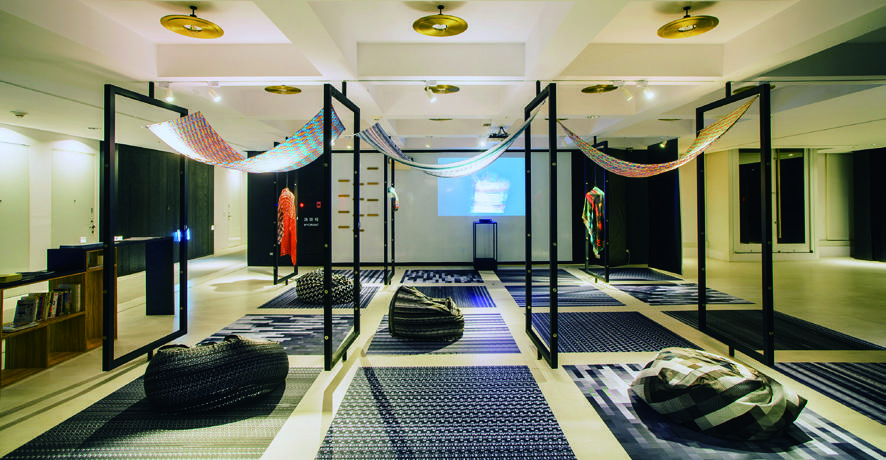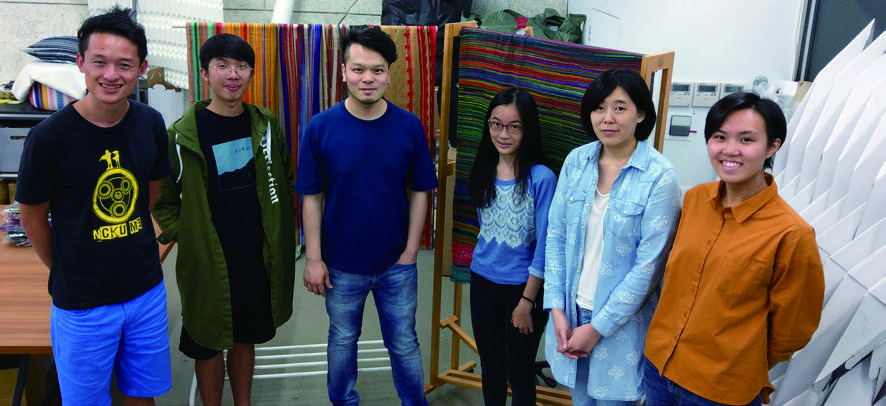Real-world learning in the university
Real-world teaching and learning
Different from the traditional teaching mode, I use an entrepreneurial practice-based course with the NCKU C-hub space to establish a team to perform real-world tasks. I believe this provides a genuine work-based environment and opportunities for students to develop their practical and theoretical abilities by participating in the process of R&D, design, manufacturing, and marketing. We also use distance education or international teaching pedagogy to learn, study directly from practice, and face the ever-changing international situation. In the current team, many students have worked directly with the design industry/creative industries.
MovISee is an interactive software designed by Yen-Ting Cho. Digital information such as photos, images and text, can be manipulated by MovISee to create unique abstract patterns.
MovISee responds to human body movement. Therefore, more detailed and unexpected patterns are created when more body movement is captured by the software. This encourages users to play with MovISee to further their creativity. The patterns produced by MovISee can be applied to different surfaces, such as paper and textiles, to produce highly personal products.
From Academia to Industry
My design brand has been established for about a year and a half, and 26 works have been accumulated. Through exhibitions, including trade shows and art exhibitions, I attempted to introduce design to more audiences, and then share designers’ experiences and ideas in an academic way to more people. At February, with the team of C-Hub, we used MovISee to create the results of the fall/winter new season scarves brought to the international trade show, the New York Fashion Fair “CAPSULE SHOW NEW YORK” and “ The Premiere Classe 2017, the largest fashion accessories exhibition in Paris, was highly favored. Currently has participated in more than 10 international trade shows, such as Maison & Objet / Premiere Classe / Tranoi.
I have received contact information from more than 300 companies and have buyers in more than 15 cities around the world, such as The Museum of Arts and Design in New York and the Nasher Sculpture Center in Dallas (selected as the best gallery store by D Magazine). In the exhibition in Paris, buyers showed a high interest in the products of NCKU team also provided many opinions. In the future, it will incorporate the reference for new product design.
The experience of the trade show is very useful to students. You encounter many types of people, learn how to respond to them, and what to prepare to conduct good business. These experience are shared directly to the participating students, the NCKU faculty and young designers in Tainan.
I already have experience for the preparation of the trade show exhibition and the establishment of a brand image. The next step is to better integrate the brand cycle with product research and development and try to use public relations to vigorously promote the product(s). Regarding product manufacturing, I have contacted manufacturers in Taiwan, the United Kingdom and mainland Europe to try new materials and develop new ones to make patterns/materials/forms more closely linked. All these experiences are very important to Taiwan’s industrial transformation. In particular, the connection between Taiwanese designers and manufacturers is weak, and our experience can bridge this gap.
Exhibition
Design does not just produce beautiful products. Design can be used to ask questions. It can also be a method to explore problems, and it can also equip people with the tools to expand their creativity and imagination. Through exhibitions, we hope to present these different possibilities to the general public, let visitors enhance their aesthetic, and have a richer understanding of design. The results of the exhibition are mostly in the form of an exclusive interview and shared with more visitors after the exhibition.
For example, in the exhibition of Taiwan Design Week, we invited designers from all fields to cooperate with us to present fashionable and diverse products in series. The topics discussed include: marine environmental protection; Tainan’s future prospects in the cooperation between traditional industries and designers in the field of shoemaking; the possibility of more digital manufacturing of human machine interaction combined with parametric design; abstraction and materialization of patterns and life, through calculations; and challenging new possibilities for artistic expression. A variety of scientific and technological attempts, whether it be the material of the fabric, the use of the model process, or the selection of booths, all attempted to present the designer’s thinking process to the audience. The exhibition at NCKU Art Center was visited by more than 2,000 people over 15 days.
Branding and design studios
There is little discussion in design schools in Taiwan about the difference between branding and design studios: for example, how should the life cycle of the brand be established? How is this organism built/contained? Which emotional expressions and rigorous plans are included (R&D to manufacturing etc.) Why do buyers have to buy back our products?
We discuss these issues with the student team. The brand’s lifecycle often requires a minimum of at least one year to have the opportunity to verify (because the trade show and seasons). The “time” in the design industry is often rarely discussed exquisitely and carefully examined. Therefore, I would like to thank NCKU for providing an atypical opportunity to go beyond the limitations of the original semester/departure and allow us to move forward softly and firmly among numerous stakeholders (buyers, manufacturers, PRs, governments, etc.).
Teams with real missions need a lot of familiarity with the academic community to manage different ways. I would like to thank the team members from various departments for their willingness to use an open and positive attitude to learn from each other and to embark on this path of uncertainty. After teaching, in addition to independent thinking, it is more difficult to judge the difference in value. We hope that this environment will allow students to directly apply their studies to the industry, and then use academic rigorous discussions to examine their own practical experiences, achieve vision growth, and reciprocal symbiosis, hoping to continue to make valuable achievements that can be shared with international achievements and thereby help Taiwan’s industrial restructuring in the 21st century.

